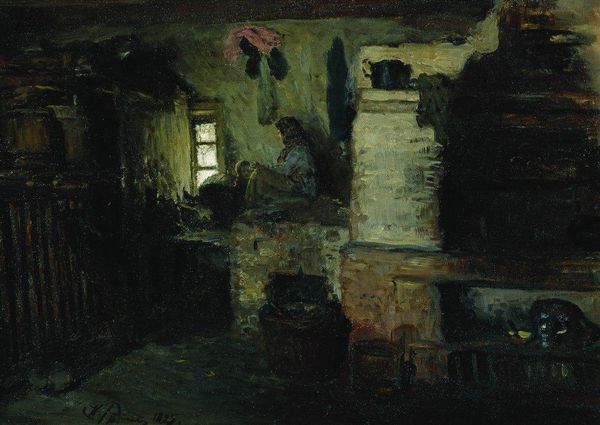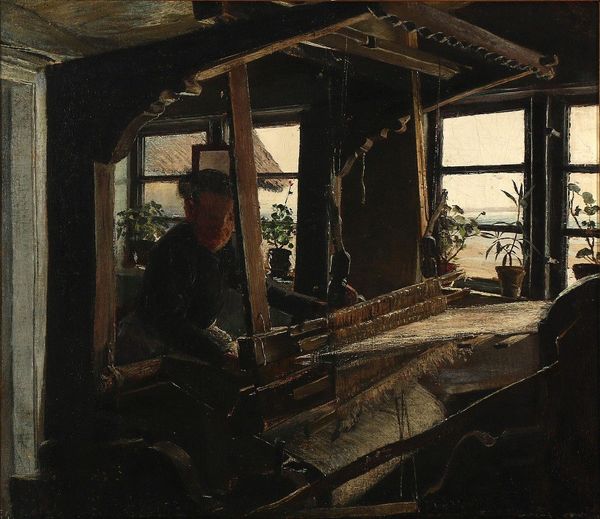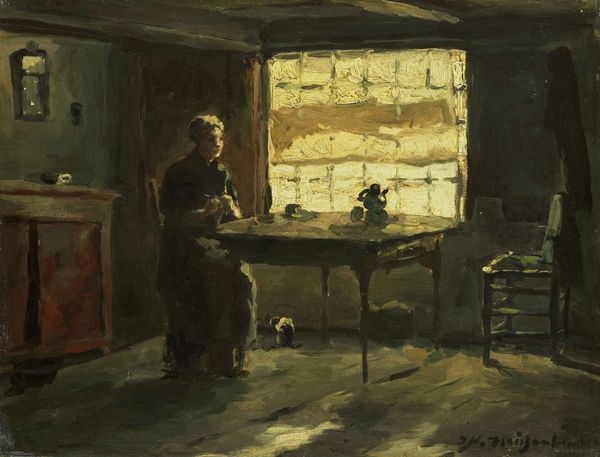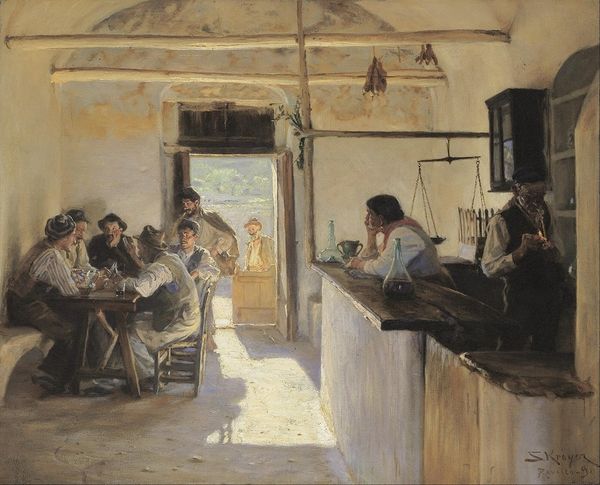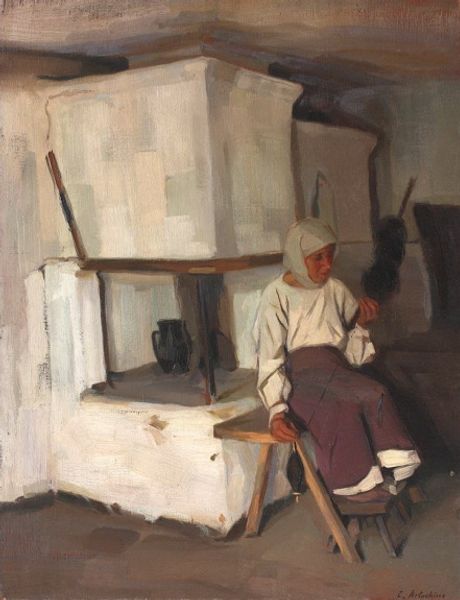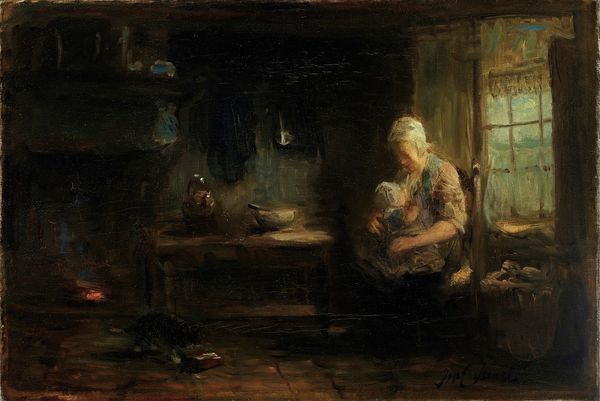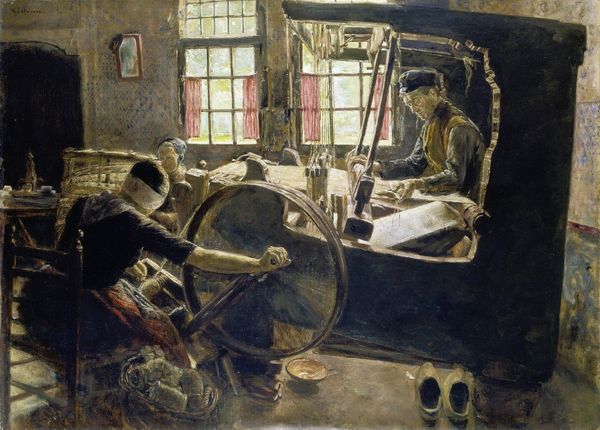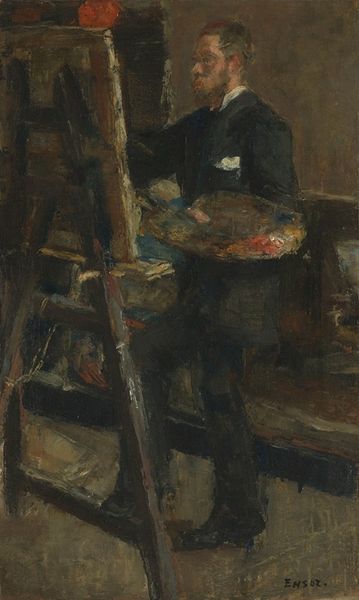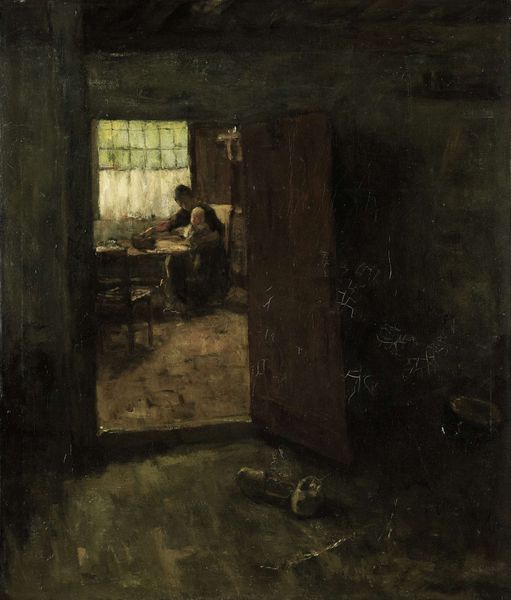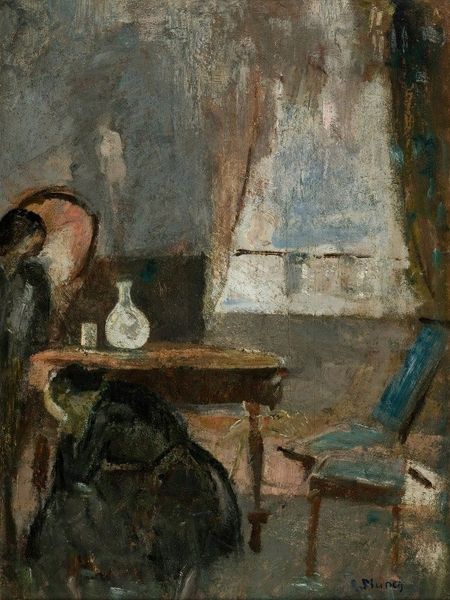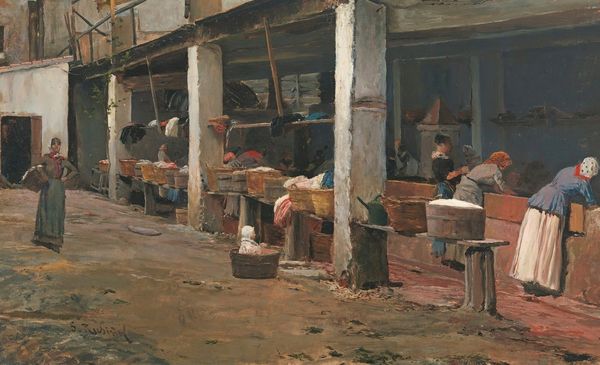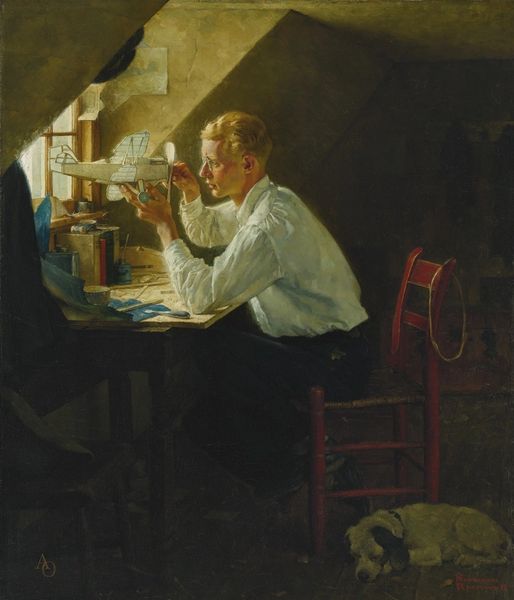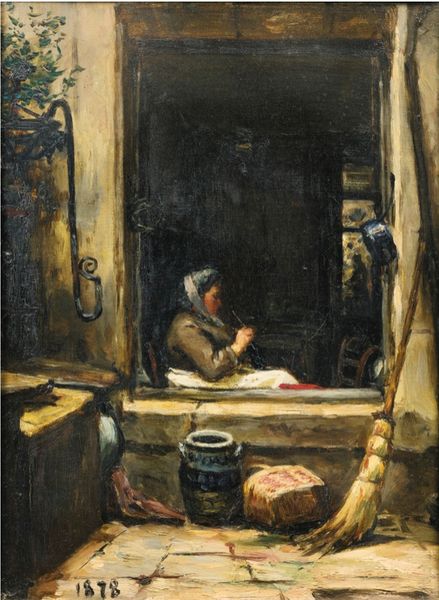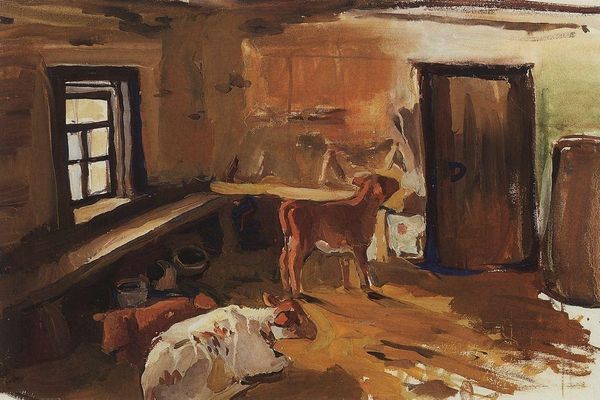
painting, oil-paint, impasto
#
portrait
#
figurative
#
painting
#
impressionism
#
oil-paint
#
charcoal drawing
#
figuration
#
oil painting
#
impasto
#
genre-painting
#
charcoal
#
realism
Copyright: Public Domain: Artvee
Editor: So, here we have Albert Edelfelt's "At the Stove," painted in 1884. It's an oil painting depicting a woman working, likely in a humble kitchen setting. I’m immediately drawn to how the light seems to emphasize her labor and the somewhat utilitarian, rough nature of the space. What stands out to you when you look at this? Curator: What intrigues me most is how Edelfelt, primarily known for portraiture and depictions of the Finnish upper class, chose to represent this scene of domestic labor. The materiality speaks volumes: consider the rough brushstrokes rendering the textures of the woman’s clothes, the bucket, the walls. This attention to material reality moves us beyond the idealizations found in much academic painting. How does the treatment of materials here challenge those boundaries? Editor: I guess by showing the actual textures and environment of the working class, instead of romanticizing it. It makes me think about who gets represented and how. Was this common for artists of his stature? Curator: Precisely. By focusing on the working class and emphasizing the physical reality of their lives, Edelfelt subtly comments on the social hierarchy of the time. Consider also the act of painting itself—the labor involved in creating the image mirroring the labor within it. Can we think of the painting as a product of labor as well as a representation of it? Editor: That’s a great point! So the painting becomes, in a way, a material record of work, both in its subject and its creation. It prompts a wider conversation about the economic realities reflected in art. Curator: Exactly. It makes one think about the consumption of art and what message it gives in this socio-economical frame. Editor: I never thought of looking at a genre scene this way, connecting materials, labor, and class so directly. It really deepens my understanding of not just the painting, but the broader context in which it was made. Curator: Indeed, viewing art through the lens of materiality and production allows us to unpack social meanings often overlooked. It's about considering the artwork as part of the wider fabric of society.
Comments
No comments
Be the first to comment and join the conversation on the ultimate creative platform.
